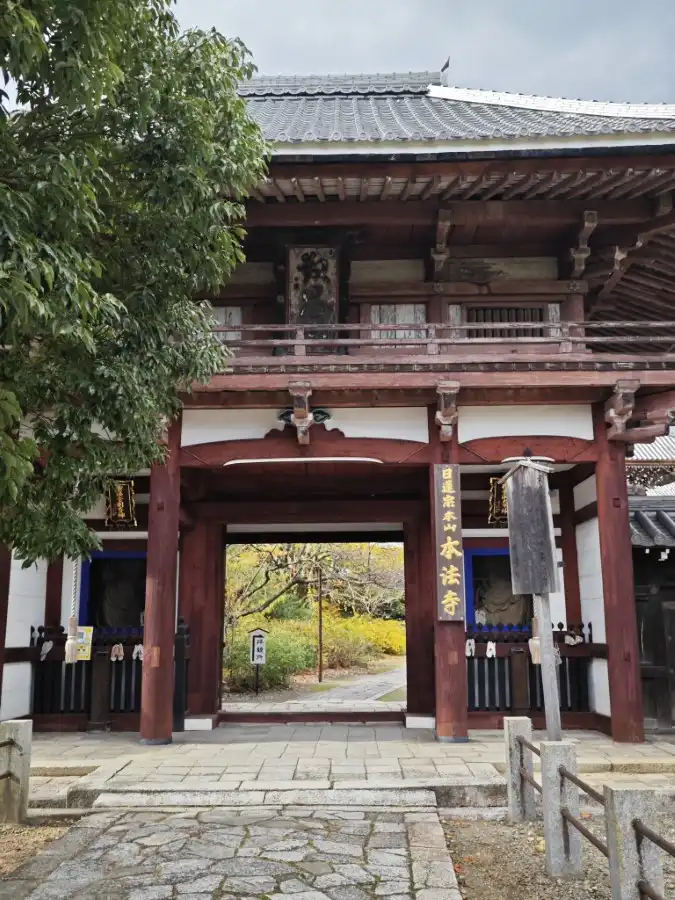If you are walking along Ogawa Dori in Kyoto, Honpouji Temple is the Niomon gate facing the street. It is a temple with a quaint appearance.

Muromachi period
Nisshin Shonin (1407-88), a Nichiren Shoshu priest active in the Muromachi period (1336-1573), founded Honpouji Temple. It is the head temple of Nichiren Shoshu. The exact date and location of its founding are not known.
Later, in 1440, the temple was destroyed because of a direct appeal to Shogun Ashikaga Yoshinori. Nisshin Shonin insisted to espouse the teachings of Nichiren Shonin and abandon the beliefs of other sects. The temple was then rebuilt in Shijo-Takakura during the Kousei era (1455-57).
In 1460, after the temple was destroyed for the second time, the temple was relocated to Sanjo Banrikoji for reconstruction. Nisshin Shonin designated this temple as the center of the teaching. After that, the Temple prospered and became a place where many monks lived and prospered.
In 1536, priest Keobo of Enryakuji Temple had a dispute with Hisakichi Matsumoto, a member of the Hokke school. This argument (the Matsumoto Quarrel) ended in a defeat of Keobo. This led to a battle between the Enryakuji and the Hokke sects. As a result, the temple was temporarily forced to flee the capital and take refuge in Sakai, Osaka.
Later, in 1542, an imperial permit was granted and the temple was rebuilt in the vicinity of Modoribashi. In 1587, the temple was moved to its current location due to the construction of the Juraku-dai by Toyotomi Hideyoshi.
Edo period
When the temple moved to its current location, its chief abbot, Nittsu Shonin, built the pagoda and temple buildings. His followers, Hon’ami Koji and Koetsu supported the works. Honpouji Temple grew to become one of the most prosperous temples in the city of Kyoto.
However, a large fire that broke out in 1788 engulfed the Honbuji temple complex. As a result, only the sutra library and treasure house remained. Later, thanks to the efforts of the followers, main hall, Kaisando-Do, pagoda, shoin, and the Niomon gate were rebuilt.
The main hall, Kaisando-Do (temple hall), Daboto (pagoda), Niomon Gate, Kori (storehouse), Shoin (drawing room), Grand Entrance, Karamon Gate, Bell Tower, Sutra Repository, Treasure House, Stone Bridge, and 13 pieces of building cards are all designated as Tangible Cultural Properties by Kyoto Prefecture. The interior of the main hall is not open to the public.






Honpouji Garden




Nearby spots from Honpouji Temple
In this area, there are other important temples of Nichiren sects such as Myorenji Temple and Myokakuji Temple.
Related articles:
[…] Honpouji Temple is a five-minute walk north along Ogawa Street. […]